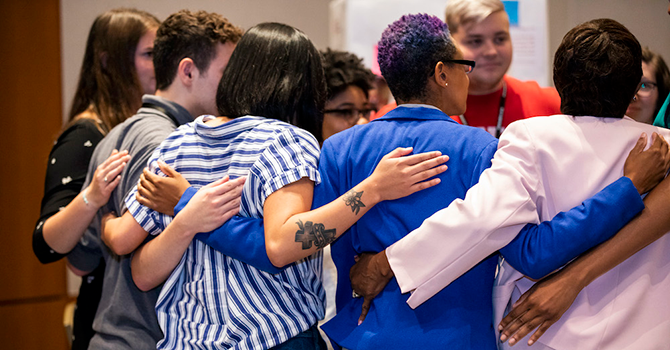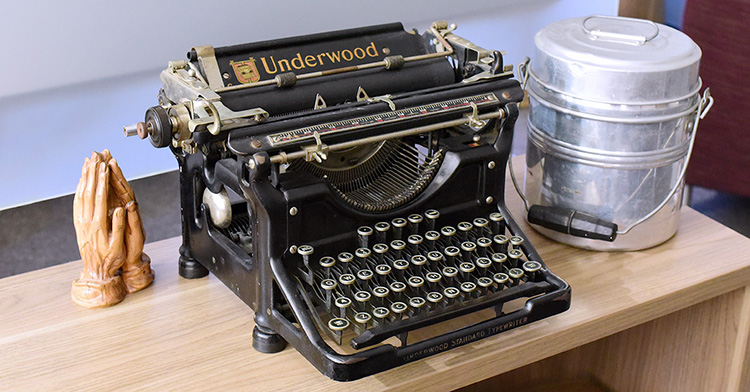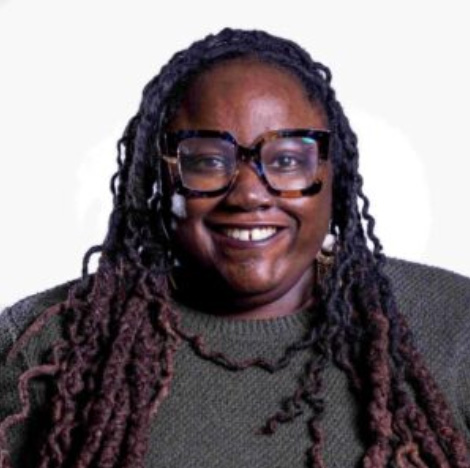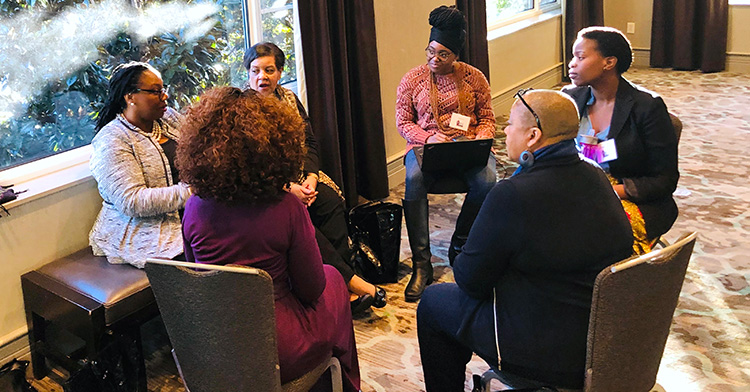There must be a better way to lead. That’s what three colleagues with the Forum for Theological Exploration realized -- a way that empowers rather than drains and that focuses on the community’s wisdom and strength rather than any individual’s capacity or stamina.
And because FTE president Stephen Lewis, former vice president Matthew Wesley Williams and senior fellow Dori Grinenko Baker believe so strongly in creating healthy, sustainable change for the greater good, they collaborated on the just-released book “Another Way: Living and Leading Change on Purpose.”
Drawing on their shared experiences, they write about topics such as discernment, co-creation and collective leadership -- for individuals focused on their own growth and search for purpose, for the coaches and mentors who support them, and for those engaged in organizational change.
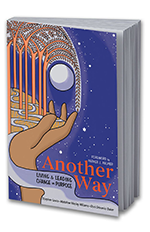 The authors distilled their work into four practices with the acronym CARE:
The authors distilled their work into four practices with the acronym CARE:
- Create hospitable space
- Ask self-awakening questions
- Reflect theologically together
- Enact the next most faithful step
But the disciplines are more than abstract concepts or theories to Lewis, Williams and Baker. They were used to reimagine and transform FTE as an organization, a process the writers describe as “more like a dance than a forced march.”
Over the course of three years, the Fund for Theological Education became the Forum for Theological Exploration -- still FTE but with a different vision. While still the Fund, leaders recognized that their values and their outcomes were not aligned. Their desire for diversity in the core program that offered fellowships to young people exploring a call to ministry, for example, was not at all reflected in the 80% white, middle-class, mainline Protestant pool of applicants the program was attracting.
In addition, they were hearing from young people who craved more community with one another to expand their vision of what ministry could look like and who wanted to have their imaginations challenged within a diverse community of peers.
This reconsideration of the way FTE was embodying its values -- or not -- led to a shift in focus. The new version of FTE became a leadership incubator partnering with faith communities and faith-based organizations to produce a generation of diverse, faithful, world-healing leaders. While fellowships are still part of what they do, a renewed emphasis has emerged on connecting good work that is already being done and listening to those doing that work.
Throughout the transformation, CARE practices were central to bringing the organization and its leaders along, the three authors explain.
Creating a hospitable space, for example, showed up in everything from configuring the seating in meetings to slowing down the pace of their work -- even putting their signature program on pause at one point. Enacting the next most faithful step meant genuinely listening to colleagues, partners and stakeholders, even when what they had to say was critical of the organization’s work.
Ahead of the book’s release in January, Lewis spoke with Faith & Leadership’s Aleta Payne. The following is an edited transcript.
Faith & Leadership: I’d like to start with the book’s dedication: “to … a new generation of people -- the dreamers, freedom fighters, artists, and warrior-healers -- who refuse to accept things as they are as all that there is and pursue another way.” That resonates on many levels. How did you come up with it?
Stephen Lewis: I think, at the end of the day, God is still calling a new generation of people to co-conspire with God’s spirit to make the world anew. This work is not for the faint of heart. It is for those who believe that God’s work and God’s presence are not contained  or incarcerated within our parochial settings but in the world. That they can make a difference with their one precious life.
or incarcerated within our parochial settings but in the world. That they can make a difference with their one precious life.
We’re dedicating this to a generation of dreamers and freedom fighters and artists and warrior-healers, those who are on the front line and the back line but who actually believe that they can make a difference in the world, can at least make the world better than the world that they inherited, for generations to come.
F&L: Running throughout the book is the acronym CARE. What is the origin of that and how does it apply to an organizational and individual context?
SL: For over a decade now, we have been trying to work with congregations and other church-led organizations about giving attention to the vocational accompaniment of the next generation, kind of as ethnographers, as observers. To see, for those who do pick up this work, what is it that they actually do, what are their patterns and habits for accompanying the next generation.
We’ve been drawing on what we see within African American church settings, the ways in which they are and have been on the front line of trying to create social change. We’ve drawn on a lot of literature and a lot of research from the organizational design world.
We’ve been synthesizing those things alongside the question, What does it mean and what does it take to lead change in congregations and institutional contexts?
A little over a decade ago, Matthew and I came together and created a program, a signature leadership program for pastors of color.
Part of what we were asking at that time was, What do they need in order to lead change purposefully in their institutional contexts? How do they help their congregations lead and respond to a changing landscape, and lead in the ways in which they’re called now to be in the world?
We were reading and synthesizing a lot of what we saw in organizational contexts. The CARE practices really are a kind of umbrella that captures a lot and tries to pull all that together. We think that these disciplines, these four CARE practices, provide real concrete handles to think about how you actually move through a discernment process to take your next most faithful step for the ways in which God is calling you.
If you even look at your own life, oftentimes when you’re called to do something or when you want to make a change in your life, you have to create space to be able to begin to think about what that entails.
You have to have someone, if not yourself, asking the kinds of questions that unearth a deeper resonance or meaning within your own life. You have to do some time thinking and reflecting on, How does this relate to God’s story, and how God is calling me now in order to be different than what I am currently?
I think you can apply that to most people’s lives. And I think it also happens at the institutional level.
F&L: I understand that you used these practices to reimagine and transform your organization, FTE. How did you use them?
SL: Right before I became president, Matthew was recruiter for diversity, and his job was to diversify the [pool] of people who applied for our fellowship program.
He went around the country trying to figure out how he might do that but hit his head on statistics -- we could never get more than about 7% to 8% of fellows in terms of diversity numbers.
At some point, we had to begin asking the question, For whom are our programs designed? If they’re designed for a particular group of people, then what does that mean for everyone else?
Those initial stirrings [led to] asking the question, How do we design an organization -- how do we design programs -- for broader diversity?
Part of the question was, How can we be responsive to a larger and a more diverse and a more contextual landscape than just a fellowship program we offer?
Asking those questions meant that we had to create a different kind of space to begin exploring.
In these last several years, we’ve also been thinking about -- given the changing landscape, all these trends and patterns and increasing diversity, the issues that we see in higher ed, the things that we see with regard to denominational shifts and how congregations are trying to be responsive to a more transient population -- how do we get a handle on what’s happening?
We had to create space to do that. And sometimes, to create space is to actually stop, to take a pause, so you can get a handle on what are the patterns and trends that are taking place.
We took an organizational pause where we suspended the majority of our programming. That’s a way in which we were trying to create space. In those times, we began to think about, How do we come together and think about these questions?
What’s the [challenge] that we as an organization are trying to solve or are called to solve in partnership with what God is doing in the world? What is our deep longing for the church and the next generation and their role to be the church’s witness within the larger context?
How might we now be called to address the leadership problem that we came up with toward that end and create space for the team to actually begin to explore those questions, to talk with our partners, to read the research and data and see what it suggests to help give rise to a new strategic direction that we now have begun to put in place?
Then the team got together to reflect critically and theologically on our insights and answers to those questions. Those things helped find a whole new kind of strategic direction and strategic thinking and build a strategic muscle within the organization.
For us, enacting our next most faithful step is now rolling out a new kind of strategic direction. We just went through a new organizational redesign and restructure in response to that strategic direction, and a new staffing model that’s going to carry our work forward in 2020 and beyond.
That is kind of a thumbnail of what we try to do at a high level within the organization -- around the organization’s vocation and how it’s called now, given the changing landscape that we find ourselves in.
At the programmatic level, we use these same practices. What we realize is that we don’t want to just convene people for the purpose of conferences, but we want to think about when we gather people, how do we gather people in a way in which what we’re doing is an act of discernment? And in that act of discernment, how are people called to take that next most faithful step as a result of the activities that they engaged in over a one-day, two-day, three-day, four-day event?
All of that has fallen under the CARE disciplines in our gatherings, and it’s part of what we’re also doing in our enactment of an alternative way.
We’re creating, re-embodying. We’re modeling what others can do. And oftentimes, we have people, particularly the next generation of leaders, who say to us, “I never knew that you could bring people together for these kinds of experiences. I never imagined that there was an alternative way of doing events and meetings than what we’re accustomed to.”
And we say, “You can do it. You have these practices. It’s just a matter of choice and choosing to experiment to do something different.”

